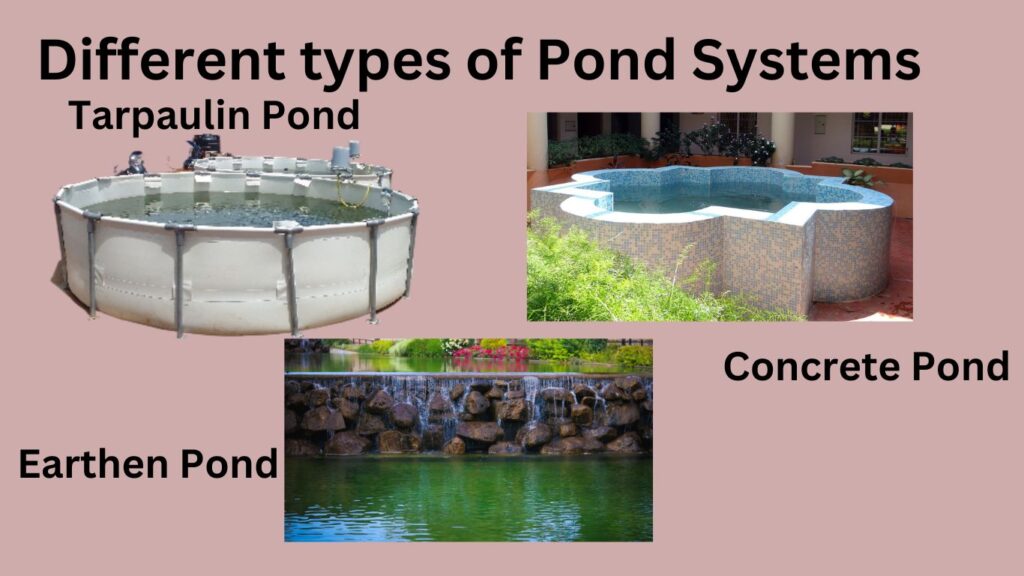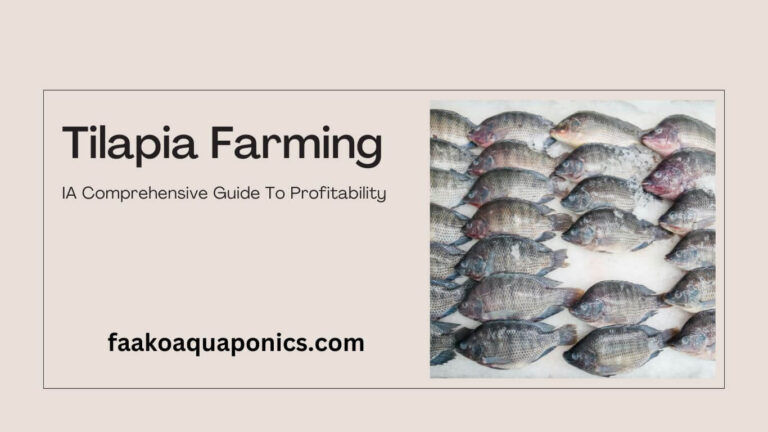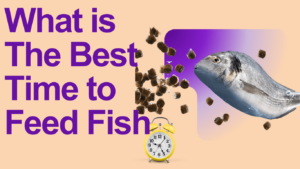Tilapia farming has gained a lot of popularity in recent years due to the rising demand for this delicious and nutritious fish.
Whether you’re considering starting a small-scale operation or expanding an existing one, this comprehensive guide will walk you through the process of profitable tilapia farming.
From setting up your farm to harvesting and marketing your fish produce.
Why Tilapia Farming?
Tilapia is one of the most commonly farmed fish globally due to its fast growth rate, adaptability to various environmental conditions, and high nutritional value.
It’s rich in protein, low in fat, and packed with essential vitamins and minerals, making it a favorite among health-conscious consumers.
Getting Started
1. Research and Planning
Before going into tilapia farming, conduct thorough research to understand the market demand, legal regulations, and technical requirements. Start by answering these questions:
– What is the demand for tilapia in your target market?
– Are there legal requirements for setting up a fish farm in your area?
– What type of tilapia species is suitable for your climate and water conditions?
– What is your budget and potential return on investment?
You must analyze all the questions above and determine your strengths and weaknesses against them before evolving into tilapia farming.
2. Choosing the Right Location
Selecting the right location for your tilapia farm is crucial for its success. Consider the following factors:
– Water quality: Tilapia thrive in clean water with a temperature range of 77°F to 86°F (25°C to 30°C). So you need to consider water sources that are conducive for your tilapia farm. Some of the sources could be underground water such as boreholes and wells. You can also consider lakes, dams, rivers, and rainwater. As much as possible, avoid metropolitan water supply because the high chlorine content in it. If that is your only source, consider treating it, or allowing it to stay in the pond for days before introducing the fish to it.
– Accessibility: Ensure easy access to transportation and utilities like electricity and water supply. Consider proximity to the market. The electricity becomes very necessary if you intend to use the Recirculating Aquaculture Systems (RAS).
– Land availability: Choose a site with enough space for ponds or tanks and future expansion. The land should not be a waterlogged area to avoid flooding. It should be spacious enough for easy navigation within and around the fish pond.
– Environmental impact: Assess potential environmental impacts and comply with regulations to minimize any adverse effects. Also, consider modern technological practices such as RAS and automated feeders.
Setting Up Your Tilapia Farm
Pond Construction
We have several types of Fish ponds, each of which can be good for your tilapia farm depending on the purpose of your farm. Some types can be for large commercial farms while others are for ornamental. Check out the 5 types of Fish Pond posts.
1. Earthen Pond Construction
If you’re opting for pond-based farming, follow these steps to construct your tilapia ponds:
– Excavate the land to create ponds of suitable size and depth. This is for an earthen pond.
– Install liners to prevent water seepage.
– Ensure proper water inlet and outlet systems for circulation and drainage.
– Incorporate aeration systems to maintain oxygen levels and prevent water stagnation.
2. Tank Setup
For indoor or intensive tilapia farming, tanks or Recirculating Aquaculture Systems (RAS) are preferable. Here’s how to set them up:
– Choose durable tanks made of fiberglass, concrete, or plastic. If it’s a tarpaulin pond, you need a frame to hold the tarpaulin on the ground. It could be made from PVC, Metal, wood, or anything strong enough to serve as a stand. If it’s concrete, then consider constructing it with cement, blocks/bricks, and plaster very well to avoid leakages. You can again line the concrete pond with tarpaulin after construction.
– Install filtration systems to maintain water quality.
– Implement aeration systems and heaters to regulate temperature and oxygen levels.
– Monitor water parameters regularly to ensure optimal conditions for tilapia growth.

Tilapia Farming Techniques
1. Stocking
Select healthy juvenile tilapia for stocking your ponds or tanks. The growth of different species of tilapia varies. Hence consider selecting healthy and well growing species for maximum profit.
The stocking density depends on the size of your facility and water quality parameters. Overcrowding can lead to stress, disease, cannibalism, and stunted growth. Ensure adequate space for each fish to maximize profit.
2. Feeding
Proper nutrition is essential for tilapia growth and health. Use high-quality commercial feed or formulate your own feed with a balanced combination of protein, carbohydrates, vitamins, and minerals.
Feed your fish according to their age and size, and adjust feeding rates based on water temperature and seasonal variations.
You need to know which type of feed to give your tilapia at which period. Also, learn when and how to feed your fish.
Finally, try and feed your fish with automated feeders to maximize and use time preciously.
3. Water Management
Maintaining optimal water quality is crucial for tilapia farming success. Regularly monitor parameters such as temperature, pH level, ammonia, and dissolved oxygen levels.
Implement water exchange or filtration systems to remove waste and maintain water clarity.
The most deadly water parameter is high ammonia which I have experienced myself in my fish farm. High ammonia can in your pond can kill your fish like bushfire in harmattan season.
4. Disease Prevention and Common Problems
Despite their hardiness, tilapia are susceptible to various diseases and environmental challenges. Here are some common problems and how to mitigate them:
– Disease outbreaks: Practice good hygiene, quarantine new fish, and monitor water quality to prevent disease outbreaks.
Regular health checks and prompt treatment of sick fish can help control diseases. Responsible use of antibiotics and natural remedies can prevent or control diseases in your tilapia farming.
– Oxygen depletion: Ensure adequate aeration, especially during hot weather or when stocking density is high.
Monitor oxygen levels regularly and have backup aeration systems in place. Always control ammonia because high ammonia in your pond depletes the oxygen in that pond.
– Overcrowding: Avoid overstocking ponds or tanks, as it can lead to competition for resources such as food, oxygen, and space. It can also lead to stress, cannibalism, and disease.
Regularly thin out fish populations if necessary.
– Water quality issues: Inspect water parameters regularly and promptly address any imbalances. Implement filtration, aeration, and water exchange systems to maintain optimal conditions. And try to get the right water source for your tilapia farming.
– Predators: Use nets or screens to protect fish from predators such as birds, mammals, and other fish species.
Harvesting and Marketing
1. Harvesting
Tilapia reach market size (usually 0.5-1 kg) within 6-9 months, depending on factors like water temperature and feed quality.
Harvest your fish using nets or traps, and handle them carefully to avoid stress and injury. Consider processing options such as gutting and filleting based on market preferences.
Tips For Harvesting Tilapia
- Do not feed your fish and harvest them immediately. If you intend to harvest in the morning, feeding them the previous day is enough.
- Reduce the water in the fish pond. Depending on how you intend to harvest, if you intend to harvest all of them immediately, then you can drain all the water. But if you still want to keep some in the pond, then reduce the water to ground where you can easily watch and catch the fish but still keep some water in there.
- Harvest them when the weather is still cool, like in the morning.
- Do not overstress the fish. Keep them in clean containers with water if you intend to transport them alive.
- If you harvest all of them and intend to restock, then clean the pond immediately as is still wet and fresh. Otherwise, it becomes very difficult to wash when the algae and other dirt dry on the pond.
2. Marketing
Develop a marketing strategy to sell your tilapia products effectively. Consider selling to local markets, restaurants, supermarkets, or directly to consumers through farmer’s markets or online platforms. Highlight the quality and sustainability of your product to attract customers.
Check out my post on Social Media Marketing for your ultimate social media marketing strategies.
Conclusion
Tilapia farming offers a lucrative opportunity for entrepreneurs and aquaculture enthusiasts alike. By following the steps outlined in this guide, you can establish a successful and profitable tilapia farm.
Remember to prioritize proper planning, efficient management practices, and continuous learning to ensure the long-term success of your venture.
Recommendation
To be very successful in tilapia farming and other fish farming in general as a beginner, the best way is to be trained and learn. Continuing to learn is the best way for even experienced farmers.
Get the best course that teaches you everything you need to know to be successful in the business.





Very interesting info!Perfect just what I was searching for!?
Great post and straight to the point. I am not sure if
this is really the best place to ask but do you guys have any thoughts on where to employ some professional writers?
Thanks in advance 🙂 Lista escape roomów
Thank you for your sharing. I am worried that I lack creative ideas. It is your article that makes me full of hope. Thank you. But, I have a question, can you help me?
sure if I can. What is it?